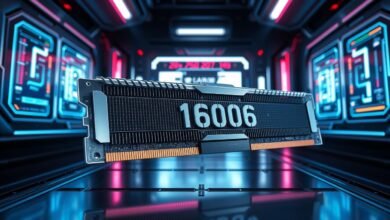Drone Pengantar Obat Bertenaga Hidrogen: 3 Jam Nonstop, 200 km Jarak, dan Sensor AI Hindari Cuaca Ekstrem
The advent of hydrogen-powered drones is transforming the medical delivery landscape. These innovative drones are designed to fly long distances without interruption, making them ideal for delivering medical supplies to remote or disaster-stricken areas.
With the capability to fly nonstop for extended periods and cover vast distances, these drones are equipped with AI-powered weather avoidance systems. This technology enables them to navigate through challenging weather conditions, ensuring the safe transport of medical supplies.
The integration of long-range drones in medical delivery is a significant step forward. It not only enhances the speed of delivery but also increases the reliability of medical supply chains, especially in areas where traditional transportation methods are compromised.
Key Takeaways
- Hydrogen-powered drones offer extended flight capabilities, making them suitable for long-distance medical delivery.
- Advanced AI weather avoidance systems enable drones to navigate through extreme weather conditions.
- The use of long-range drones enhances the speed and reliability of medical supply chains.
- These drones are particularly beneficial for delivering medical supplies to remote or disaster-stricken areas.
- The integration of hydrogen-powered drones in medical delivery is a significant innovation in the healthcare sector.
The Revolution in Medical Delivery: Hydrogen-Powered Drones
Medical delivery is on the cusp of a revolution, thanks to the emergence of hydrogen-powered drones. Traditional medical delivery systems face numerous challenges, from navigating through difficult terrains to ensuring timely delivery, especially in remote or disaster-stricken areas.
Current Challenges in Medical Delivery Systems
Current medical delivery systems often struggle with accessibility and timeliness. Many areas, especially rural or underserved regions, lack the infrastructure necessary for quick and efficient medical supply delivery. Long response times can be critical in medical emergencies, and the situation is often exacerbated in areas affected by natural disasters or conflict.
The limitations of traditional delivery methods highlight the need for innovative solutions that can overcome geographical barriers and ensure rapid delivery of medical supplies.
How Hydrogen-Powered Drones Are Changing the Game
Hydrogen-powered drones are addressing the challenges faced by traditional medical delivery systems by offering extended flight times, longer range, and the ability to navigate through challenging weather conditions. These drones can fly for up to 3 hours nonstop and cover distances of over 200 km, making them ideal for delivering medical supplies to remote or hard-to-reach areas.
With their advanced AI-powered weather avoidance systems, hydrogen-powered drones can adapt to changing weather conditions, ensuring safe and efficient delivery of medical supplies. This technology is poised to significantly improve healthcare delivery, especially in areas where traditional methods fall short.
Understanding Hydrogen Fuel Cell Technology in Drones
Hydrogen fuel cell technology is revolutionizing the drone industry with its potential for extended flight times and reduced environmental impact. This innovative power solution is transforming the way drones operate, enabling them to fly longer and more efficiently.
How Hydrogen Fuel Cells Work
Hydrogen fuel cells generate electricity through a chemical reaction between hydrogen and oxygen, producing only water and heat as byproducts. This process involves the use of a fuel cell stack, where hydrogen is fed into the anode, and oxygen is introduced into the cathode. The reaction produces an electric current, which powers the drone.
The use of hydrogen fuel cells in drones eliminates the need for traditional batteries, reducing weight and increasing energy density. This results in longer flight times and faster recharge capabilities, making them ideal for applications requiring extended operation.
Advantages Over Battery-Powered Systems
Hydrogen fuel cell-powered drones offer several advantages over battery-powered systems. They provide longer flight times, faster refueling, and reduced maintenance due to fewer moving parts. Additionally, hydrogen fuel cells are more environmentally friendly, producing zero emissions during operation.
| Feature | Hydrogen Fuel Cell | Battery-Powered |
|---|---|---|
| Flight Time | Up to 3 hours | Typically under 1 hour |
| Refueling Time | Minutes | Hours |
| Environmental Impact | Zero emissions | Emissions from battery production and disposal |
Environmental Impact and Sustainability
The environmental benefits of hydrogen fuel cell technology are significant. By producing only water and heat as byproducts, these drones offer a sustainable alternative to traditional fossil fuel-based systems. Furthermore, the use of hydrogen produced from renewable energy sources can further reduce the carbon footprint of drone operations.
As the drone industry continues to evolve, the adoption of hydrogen fuel cell technology is expected to play a crucial role in reducing the environmental impact of drone operations while enhancing their efficiency and capabilities.
Drone Pengantar Obat Bertenaga Hidrogen: 3 Hours of Nonstop Flight Capability
The latest innovation in drone technology allows for 3 hours of continuous flight, significantly enhancing medical delivery capabilities. This extended flight time is a game-changer for reaching remote areas without the need for frequent refueling.
The ability to fly for 3 hours nonstop is made possible by advancements in hydrogen fuel cell technology. Hydrogen fuel cells offer a more efficient and cleaner source of energy compared to traditional battery-powered systems.
The Technology Behind Extended Flight Time
Hydrogen fuel cells work by converting chemical energy into electrical energy. This process involves combining hydrogen with oxygen to produce electricity, with water and heat as the only byproducts. The technology behind these fuel cells is crucial for achieving extended flight times.
Efficient energy storage and conversion are key factors. Hydrogen fuel cells store energy in the form of hydrogen, which is then converted into electricity to power the drone.
| Technology | Flight Time | Energy Source |
|---|---|---|
| Hydrogen Fuel Cell | Up to 3 hours | Hydrogen |
| Battery-Powered | Up to 1 hour | Lithium-ion Batteries |
| Gasoline-Powered | Up to 2 hours | Gasoline |
Real-World Applications of 3-Hour Flight Endurance
The 3-hour flight endurance opens up new possibilities for medical delivery in remote and hard-to-reach areas. Drones can now cover longer distances without needing to refuel, making them more reliable for critical deliveries.
This capability is particularly beneficial in scenarios where timely delivery of medical supplies is crucial, such as during emergencies or in areas with limited infrastructure.
Operational Efficiency and Mission Planning
The extended flight time also enhances operational efficiency and simplifies mission planning. With the ability to fly for longer periods, drones require less frequent returns to base for refueling, reducing downtime and increasing the number of deliveries that can be made in a single day.
This efficiency is critical for mission planning, as it allows for more flexible routing and scheduling, ultimately leading to more effective medical supply delivery operations.
Impressive 200 km Range: Reaching Remote Areas
The hydrogen-powered drone’s ability to fly 200 km without refueling opens new avenues for medical delivery in remote areas. This extended range is crucial for reaching isolated communities where traditional transportation methods often fail.
Technical Specifications Enabling Long-Range Flight
The drone’s long-range capability is made possible by its advanced hydrogen fuel cell technology. This system provides a significant increase in energy efficiency compared to traditional battery-powered drones. The technical specifications include a high-capacity hydrogen storage system and an optimized propulsion system, allowing the drone to cover extensive distances.
Mapping the Potential Coverage Areas
With a range of 200 km, these drones can potentially serve vast areas, including rural and underserved regions. Mapping the coverage areas involves identifying locations that are currently difficult to reach with medical supplies. By doing so, healthcare providers can plan and implement more effective delivery routes, ensuring that critical medical aid reaches those in need.
Overcoming Geographic Barriers in Healthcare Delivery
Geographic barriers, such as mountains, rivers, and forests, often hinder healthcare delivery in remote areas. The long-range drones are designed to overcome these obstacles, providing a reliable means of transporting medical supplies. This capability is particularly important during emergencies or in areas affected by natural disasters, where timely delivery of medical aid can be lifesaving.
AI-Powered Weather Avoidance Systems
The integration of AI-powered weather avoidance systems in hydrogen-powered drones revolutionizes medical delivery by ensuring safe flight operations. This cutting-edge technology enables drones to detect and navigate through adverse weather conditions, minimizing risks and ensuring the timely delivery of medical supplies.
Sensor Technology for Weather Detection
Advanced sensor technology plays a crucial role in detecting weather conditions. These sensors, including radar, lidar, and weather cameras, provide real-time data on weather patterns, allowing the drone’s AI system to make informed decisions about flight paths. The use of multiple sensors enhances the accuracy of weather detection, reducing the likelihood of false positives or negatives.
The data collected from these sensors is processed using sophisticated algorithms that analyze various weather parameters, such as wind speed, precipitation, and temperature fluctuations. This analysis enables the drone to predict and prepare for potential weather hazards.
Machine Learning Algorithms for Flight Path Optimization
Machine learning algorithms are integral to optimizing flight paths in real-time based on weather data. These algorithms process the information gathered from sensors and generate the most efficient and safe route to the destination. The continuous learning aspect of these algorithms means that the system improves over time, adapting to new weather patterns and enhancing overall performance.
By leveraging historical weather data and real-time updates, the AI system can predict potential weather-related obstacles and adjust the flight path accordingly. This proactive approach ensures that the drone remains on course and avoids hazardous conditions.
Real-time Adaptation to Changing Weather Conditions
The ability to adapt in real-time to changing weather conditions is a significant advantage of AI-powered weather avoidance systems. As weather patterns evolve, the drone’s AI continuously updates its flight plan to ensure safe passage. This real-time adaptation capability is crucial for maintaining the integrity of medical supplies during transport.
By dynamically adjusting its route, the drone can circumvent severe weather, reducing the risk of damage to the cargo and ensuring that medical supplies reach their destination in optimal condition.
Medical Payload Capabilities and Handling
The hydrogen-powered drone is designed with advanced medical payload capabilities, enabling the safe transportation of critical supplies. This capability is crucial for delivering medical aid to areas that are difficult to reach due to geographical constraints or emergency situations.
Types of Medical Supplies Transportable
These drones can transport a variety of medical supplies, including vaccines, medications, blood samples, and medical equipment. The flexibility in payload options makes them highly versatile for different medical delivery needs.
Temperature Control Systems for Sensitive Medications
To ensure the integrity of temperature-sensitive medications, the drones are equipped with sophisticated temperature control systems. These systems maintain a consistent temperature range during transport, safeguarding the efficacy of the medical supplies.
Secure Packaging and Delivery Mechanisms
The drones utilize secure packaging to protect the medical payload during transit. This includes tamper-evident packaging and shock-absorbing materials to prevent damage.
Chain of Custody and Verification Systems
A robust chain of custody is maintained through advanced verification systems, ensuring that the medical supplies are handled and delivered securely. This includes GPS tracking and authentication protocols to verify the integrity of the payload at every stage.
By integrating these advanced features, the hydrogen-powered drones provide a reliable and efficient solution for medical delivery, enhancing the overall healthcare infrastructure.
Navigation and Autonomous Flight Features
With their advanced navigation and autonomous flight features, hydrogen-powered drones are poised to transform the landscape of medical supply delivery. These drones are equipped with sophisticated systems that enable them to navigate through challenging environments safely and efficiently.
GPS and Satellite Navigation Systems
The drones utilize GPS and satellite navigation systems to determine their precise location and navigate to their destinations. This technology allows for accurate positioning and real-time tracking, ensuring that medical supplies are delivered promptly.
Obstacle Avoidance Technology
One of the critical features of these drones is their obstacle avoidance technology, which enables them to detect and avoid obstacles in their flight path. This is achieved through a combination of sensors and sophisticated algorithms that analyze the environment and adjust the drone’s trajectory accordingly.
Autonomous Landing Capabilities
The drones are also equipped with autonomous landing capabilities, allowing them to land safely in designated areas without human intervention. This feature is particularly useful in remote or hard-to-reach locations where manual landing might be challenging.
Communication Systems and Remote Monitoring
Communication systems play a vital role in the operation of these drones, enabling real-time monitoring and control from a remote location. This allows operators to track the drone’s status, receive updates on its flight path, and make adjustments as necessary to ensure a successful delivery.
The integration of these advanced navigation and autonomous flight features ensures that hydrogen-powered drones can operate safely and efficiently, even in challenging environments, thereby enhancing the reliability of medical supply delivery.
Comparison with Other Drone Technologies
Hydrogen-powered drones are making significant strides in medical delivery, but how do they compare to other drone technologies in terms of performance and operational costs? The medical delivery drone landscape is diverse, with various power sources being utilized.
Battery-Powered Medical Delivery Drones
Battery-powered drones are the most common type currently in use. They offer a clean and quiet operation, which is advantageous in urban environments. However, their flight duration and range are limited by battery capacity, typically ranging from 30 minutes to a few hours. Advances in battery technology are continually improving their performance.
Gasoline-Powered Alternatives
Gasoline-powered drones offer longer flight times and greater ranges compared to battery-powered drones. They are suitable for longer-distance medical deliveries, especially in rural or hard-to-reach areas. However, they are generally noisier and have a larger environmental footprint due to emissions.
Performance Metrics and Operational Costs
When comparing these drone technologies, several key performance metrics and operational costs come into play. These include:
- Flight Duration and Range: Hydrogen-powered drones can fly for up to 3 hours and cover distances of over 200 km, outdoing many battery-powered drones.
- Operational Costs: The cost of hydrogen fuel cells, battery replacements, and gasoline needs to be considered. Hydrogen fuel cells offer potentially lower long-term costs due to fewer moving parts and less maintenance.
- Environmental Impact: Battery-powered drones are the most environmentally friendly, producing no emissions during flight. Hydrogen-powered drones offer a cleaner alternative to gasoline-powered drones, with water and heat as the only byproducts.
Each drone technology has its advantages and disadvantages, and the choice between them will depend on the specific requirements of the medical delivery task at hand.
Implementation Challenges and Solutions
Hydrogen-powered drones hold great promise for medical delivery, but their implementation is fraught with challenges that require careful consideration. As we explore the potential of these drones, it’s crucial to address the obstacles that could hinder their adoption.
Regulatory Hurdles for Medical Delivery Drones
One of the significant challenges facing the implementation of hydrogen-powered drones in medical delivery is navigating the complex regulatory landscape. Regulatory bodies such as the Federal Aviation Administration (FAA) in the United States have strict guidelines for drone operations, including those related to medical delivery. Compliance with these regulations is essential for the safe and legal operation of drones.
To overcome these hurdles, industry stakeholders must work closely with regulatory bodies to develop clear and comprehensive guidelines that address the unique aspects of hydrogen-powered drones in medical delivery.
Infrastructure Requirements
The successful deployment of hydrogen-powered drones for medical delivery also depends on the availability of appropriate infrastructure. This includes not only the drones themselves but also hydrogen refueling stations and maintenance facilities. Developing this infrastructure will require significant investment and planning.
Strategic planning is necessary to ensure that the infrastructure is in place to support the widespread adoption of hydrogen-powered drones.
Addressing Safety Concerns
Safety is a paramount concern for the operation of drones in medical delivery. Hydrogen-powered drones, in particular, pose unique safety challenges due to the use of hydrogen fuel. Robust safety protocols and emergency response plans must be developed to mitigate these risks.
Implementing advanced safety features, such as redundant systems and emergency landing protocols, can help minimize the risks associated with hydrogen-powered drones.
Training and Operational Protocols
The effective operation of hydrogen-powered drones in medical delivery requires specialized training for personnel involved in their deployment and maintenance. Comprehensive training programs should cover aspects such as drone operation, safety procedures, and maintenance.
Developing standardized operational protocols will also be crucial for ensuring consistency and reliability in the use of hydrogen-powered drones for medical delivery.
Case Studies: Successful Deployments Worldwide
Hydrogen-powered drones are revolutionizing medical delivery worldwide, with successful deployments in various contexts. These drones have shown remarkable potential in improving healthcare logistics, particularly in challenging environments.
Rural Healthcare Applications
In rural areas, hydrogen-powered drones have been instrumental in delivering medical supplies, overcoming geographical barriers, and ensuring timely access to healthcare services. For instance, a project in a remote region successfully utilized these drones to transport vaccines and medications, significantly improving healthcare outcomes.
The use of hydrogen-powered drones in rural healthcare has also reduced reliance on traditional transportation methods, which are often hampered by infrastructure challenges. By providing a reliable and efficient delivery system, these drones have enhanced the overall quality of healthcare in these areas.
Emergency Response Scenarios
During emergency response situations, hydrogen-powered drones have proven to be invaluable assets. They have been deployed to deliver critical medical supplies, such as blood and emergency medications, to areas affected by natural disasters or other crises.
The ability of these drones to operate in challenging weather conditions, coupled with their long-range capabilities, makes them particularly suited for emergency response scenarios where timely delivery is crucial.
Humanitarian Aid and Disaster Relief Operations
In humanitarian aid and disaster relief operations, hydrogen-powered drones have played a significant role in delivering essential medical supplies to affected populations. Their ability to navigate through debris-filled or hard-to-reach areas has been particularly beneficial in such contexts.
By leveraging hydrogen-powered drones, humanitarian organizations can respond more effectively to disasters, ensuring that critical medical aid reaches those in need in a timely manner.
Conclusion: The Future of Medical Delivery Drones
The emergence of hydrogen-powered drones is transforming the landscape of medical delivery. With their ability to fly nonstop for 3 hours, cover distances of up to 200 km, and navigate through challenging weather conditions using AI-powered sensors, these drones are revolutionizing the way medical supplies are transported.
The future of medical delivery is closely tied to advancements in drone technology. As these drones continue to evolve, we can expect to see significant improvements in healthcare delivery, particularly in remote and underserved areas. The potential for hydrogen-powered drones to save lives and improve health outcomes is vast.
With ongoing developments in drone technology, the medical delivery sector is on the cusp of a significant transformation. The integration of hydrogen fuel cells, advanced navigation systems, and AI-powered weather avoidance is set to redefine the future of medical delivery, making it faster, more reliable, and more efficient.





